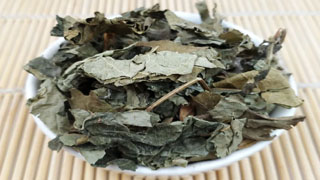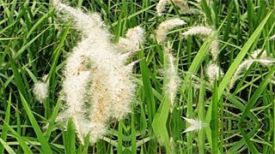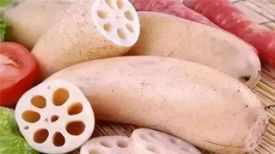
Alias: Stillwood, Stillwood, Dineneneba Wutong, Illicium wutong, Sorbus Leaf Changshan, Aitongzi, Sorbus tea, Bairihong, Stillwood peony, Stillwood firewood
Harvesting and processing: Harvested from June to October, tied into bundles, and dried in the sun.
Medicinal parts: tender branches and leaves
Origin: North China, East China, Central South, Southwest, etc
Family: Verbenaceae, Paeonia genus
Original plant: wutong (Changshan, Haizhou)
Plant situation: Shrubs or small trees, growing in shrubs on mountain slopes
Height of 1.5-10m. Young branches, petioles, and inflorescences are often covered in yellowish brown soft hairs or nearly hairless; The old branch is gray white with skin holes, white at the pith, and has light yellow thin transverse septa.
Single leaf opposite growth; The petiole length is 2-8cm; Leaves are paper in shape, broadly ovate, ovate, ovate elliptic, or triangular ovate, measuring 5-17cm in length and 5-14cm in width. The tips are pointed or gradually pointed, and the base is broadly wedge-shaped to wedge-shaped, occasionally heart-shaped. The entire margin is or has wavy teeth, and both sides are sparsely short haired or nearly hairless; 3-5 pairs of lateral veins.
Umbrella shaped inflorescence grows at the top or in the organs, scattered, usually with dichotomous branches. The inflorescence is 8-18cm long, and the peduncle is 3-6cm long. It has elliptical leaf shaped bracts and falls early; Calyx is green white when young, purple red later, fused at the base, slightly swollen in the middle, with 5 edges, deeply lobed at the tip, and lobes triangular lanceolate or ovate; Corolla white or pinkish, corolla tube slender, apex 5-lobed, lobes long elliptical; Stamen 4, extending out of the corolla along with the style
The drupe is nearly spherical, with a diameter of 6-8mm, enclosed in an enlarged calyx, and turns blue purple when ripe. The flowering and fruiting period is from June to November.
Traits of stinky wutong: twigs are round or slightly square, about 3mm in diameter, yellowish green, with longitudinal fine wrinkles, yellow punctate lenticels, densely covered with short hairs, and the hairs of slightly older people fall off; Crispy and easy to break, with a light yellow wood section and a white marrow section. Leaves are opposite, often wrinkled, curled, or broken. When intact, they are flattened and take on a wide oval or elliptical shape, measuring 7-15cm in length and 5-9cm in width. The tip is gradually pointed, and the base is wide wedge-shaped or truncated. The entire margin is or has wavy teeth, with a gray green upper surface and a yellow green lower surface. Both sides are covered in short hairs; The petiole is 2-8cm long and densely covered with short hairs. Flowers often wither, yellow brown in color, with long stems and stamens protruding outside the corolla; For those that have already set fruit, the sepals are persistent, withered yellow, with one fruit inside, triangular oval shaped, gray brown, with wrinkled texture. It has a strange odor, bitter and astringent taste.
High quality products are best with dried flower branches and green leaves.
Wutong Medicine Property:
Process and pick out weeds, soak slightly in water, moisten thoroughly, cut into small pieces of 1cm long, dry in the sun, and use raw.
Taste bitter in nature; Weixin; Sexual Peace
Guijing Liver; Gallbladder; Spleen meridian
Functional indications: dispelling wind and dehumidification; Calming the liver and lowering blood pressure; Detoxification and insecticide. Main rheumatism and rheumatism pain; hemiplegia; Hypertension; migraine; Malaria; Dysentery; Ulcer toxin, eczema, scabies
Usage and dosage for oral administration: decoction, 10-15g, fresh 30-60g; Or soaking in alcohol; Or into pills or powder. External use: appropriate amount, decoct and wash with water; Or massage and apply; Mix or adjust at the end of the study.
Note that the hypotensive effect of wutong is weakened after being boiled with high heat.
① The Compendium of Materia Medica: "Treating malaria. ""
② The Compendium of Materia Medica states: "For those who wash goose feet, all sores and scabies, boil soup to wash sweat stains, and wet ham that does not heal for a long time, soak it in wine with Anlu Zi and take it. It can treat all rheumatism, stop hemorrhoids, boil and take orally, treat ulcers, crush into cakes, add tung oil patches
③ According to the "Lingnan Medicinal Collection Record": "Treat all carbuncles, crush them. ""
④ Modern Practical Traditional Chinese Medicine ":" Used to treat warm malaria, phlegm accumulation in the chest, all rheumatism, obstruction and discomfort of the limbs, relieve swelling, and stop dysentery. ""
⑤ Common Chinese Herbal Medicines in Shanghai ":" Dispels wind and dampness, relieves pain, and lowers blood pressure. """
compound
① For men and women who feel rheumatism, or are addicted to drinking and wind, so that their feet are tender and painful, and they cannot walk, or their hands are caught, and they cannot lift up: ground wutong (flowers, leaves, stems, and seeds can be taken, chopped, dried, and ground) is one jin, and Siegesbeckia (fried, ground) is eight liang. Mix the two ingredients evenly, and refine honey pills as big as tung seeds. In the morning and evening, I will give away four coins with white rolling soup. Avoid eating pig liver, sheep blood, and other substances. Or just use two liang of stinky wutong trees, decoct soup and drink, drink with wine, even take ten doses, or decoct soup and wash your hands. (Collection of Health Experiences, Pixiu Pill)
② Cure half limb wind: stinky wutong leaves and stems, dry and grind the powder, a total of two jin, and use one jin of white honey as pills. Boil underwater in the morning and drink in the evening, three yuan per serving. (Compendium Collection)
③ Treatment of rheumatic pain, aching joints and hypertension: stinky wutong three to one or two, fried; Grinding powder costs one yuan per dose, three times a day. It can also be used in conjunction with Pixiu grass. (Commonly Used Chinese Herbal Medicines in Shanghai)
④ Treatment of half headache: five yuan for Sichuan pepper, two liang for stinky wutong leaves. First, fry the paulownia leaves until they turn yellow, then add chili peppers and stir fry again. Sprinkle hot wine in the pot, mix and remove, roll it into silk, and tie it in the painful area; Eat a bowl of hot wine, cover your neck with a blanket and sleep, sweating. (Compendium Collection)
⑤ Cure all internal and external hemorrhoids: seven stinky wutong leaves, seven tile pines, and three kinds of skin nitrates. Fry soup, smoke and wash. (Compendium Collection)
⑥ Cure eczema or prickly heat itching: Ao wutong is suitable to understand, decoction and bath. (Commonly Used Chinese Herbal Medicines in Shanghai)


